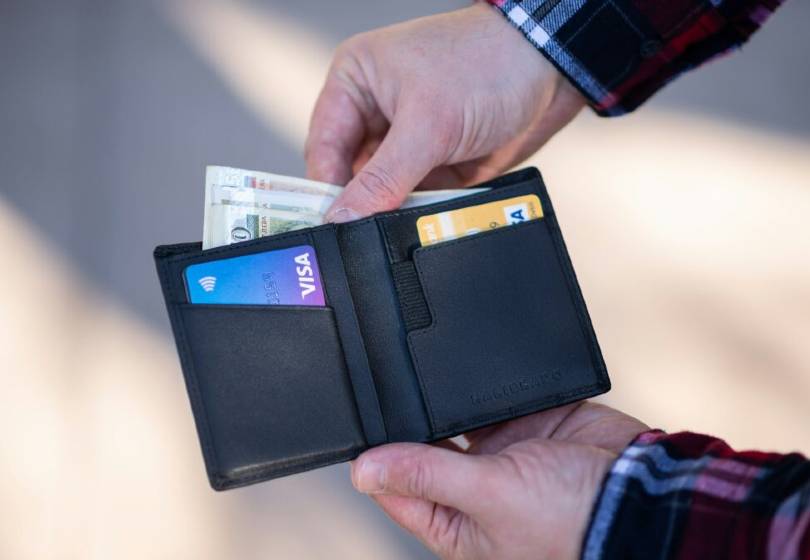Unexpected Tax Benefits of Personal Loans in Utah — What Smart Borrowers Need to Know
When most people think about personal loans in Utah, they imagine quick cash for emergencies, consolidating debt, or funding big purchases. But few realize there

Aunque la mayoría de las personas utilizan el crédito rotativo a diario, realmente no saben qué es exactamente. Cada vez que usas una tarjeta de crédito, estás utilizando crédito rotativo. Sin embargo, hay varias otras formas de crédito rotativo que usamos en nuestra vida cotidiana.
Entonces, ¿qué es el crédito rotativo? ¿Cómo funciona? ¿Afecta a tu puntaje de crédito? Sigue leyendo para aprender todo lo que necesitas saber sobre el crédito rotativo para que puedas entenderlo mejor y gestionar tus finanzas."
El crédito rotativo se define como una línea de crédito continua que te permite pedir prestada una suma preestablecida de dinero repetidamente y pagarla en cuotas. Viene con un límite de crédito específico que los prestatarios pueden acceder repetidamente mientras lo reembolsan completamente o en intervalos de pago regulares.
Puedes usar y devolver el crédito repetidamente mientras la cuenta de crédito permanezca abierta.
Algunos ejemplos de crédito rotativo incluyen:
Una cuenta de crédito rotativo viene con un límite de crédito. Este es el monto máximo de dinero que puedes gastar. Una cuenta de crédito rotativo es una cuenta abierta, lo que significa que no tiene una fecha de finalización.
A medida que comienzas a usar tu crédito, el saldo disponible comenzará a disminuir. Tu límite de crédito también se ve afectado por las tarifas y los costos de interés.
Puedes reponerlo pagando el monto adeudado al final de cada ciclo de facturación. Si no puedes pagar el monto adeudado, al menos deberás hacer un pago mínimo para evitar cualquier penalización.
Si eliges pagar el saldo en su totalidad dentro de la fecha de vencimiento, no se te cobrarán intereses.
Pero si eliges rotar tu crédito, solo se llevará una parte del saldo al mes siguiente. Para rotar el saldo completo, necesitarás hacer un pago mínimo.
Este pago mínimo es un porcentaje de tu saldo o una cantidad preestablecida especificada en tu acuerdo.
El crédito rotativo puede impactar positivamente tu puntuación de crédito de varias maneras. Te permite mejorar tu puntuación de crédito haciendo pagos a tiempo. Si configuras el pago automático en tus cuentas de crédito rotativo, puedes asegurar pagos puntuales para aumentar tu puntuación de crédito.
El crédito rotativo también te ayuda a diversificar tu portafolio de crédito. Siempre es mejor tener múltiples tipos de cuentas de crédito para diversificar tu mezcla, como cuentas de crédito a plazos y rotativas.
Además, una cuenta de crédito rotativo también te permite construir tu historial crediticio. Puedes abrir una cuenta de crédito rotativo y hacer pagos mensuales puntuales para construir tu historial.
Sin una cuenta de crédito, no tendrás una puntuación de crédito. Por lo tanto, no habrá forma de mostrar tu solvencia a los prestamistas. creditworthiness to lenders.
Tener una cuenta de crédito rotativo también puede impactar negativamente tu puntuación de crédito de varias maneras. Por ejemplo, si faltas a tus pagos, tu puntuación de crédito se verá afectada ya que tu historial de pagos determina en gran medida tu puntuación de crédito.
Además, solicitar una cuenta de crédito rotativo requiere una consulta de crédito. Una consulta de crédito puede afectar negativamente tu puntuación de crédito por hasta dos años.
Además, tu ratio de utilización de crédito también afecta tu puntuación de crédito. Si utilizas más del 30% de tu límite de crédito, puede tener un impacto negativo en tu puntuación de crédito.
Por ejemplo, si tu tarjeta de crédito tiene un límite de $5,000, intenta mantener tus gastos por debajo del 30% ($1,500). Mantener un saldo superior a $1,500 puede perjudicar tu puntuación de crédito. Por lo tanto, intenta mantener baja tu ratio de utilización de crédito.
Por último, si decides cerrar tu cuenta de crédito rotativo, puede aumentar tu ratio de utilización de crédito y perjudicar tu puntuación de crédito. Esto se debe a que tendrás menos crédito disponible para usar si cierras tu cuenta de crédito rotativo.
El crédito rotativo es un tipo de cuenta de crédito que te permite usar crédito de manera conveniente. Al gestionar sabiamente el crédito rotativo, puedes mejorar tu puntuación de crédito e incluso beneficiarte de las diversas ventajas que ofrecen estas cuentas. Con una buena puntuación de crédito, puedes obtener términos de crédito ideales para financiar tus compras.
Ahora que conoces la respuesta a “qué es una línea de crédito rotativo”, sigue adelante con el proceso de solicitud. Antes de solicitar, asegúrate de verificar tu informe de crédito.
Rápido y seguro, empieza rápidamente hacia un préstamo en efectivo con pasos simples. ¡Accede a tus fondos de inmediato!
¿Tienes preguntas o necesitas asistencia? Nuestro equipo dedicado está aquí para ayudarte con todas tus consultas sobre préstamos en efectivo. ¡Contáctanos ahora!
When most people think about personal loans in Utah, they imagine quick cash for emergencies, consolidating debt, or funding big purchases. But few realize there
When money emergencies strike, you don’t have time to wait days for approval or paperwork. Whether it’s a medical bill, car repair, or rent due
Identity theft can happen to anyone and often when you least expect it. One of the most powerful ways to protect yourself is by freezing
When unexpected medical bills hit, they don’t just affect your health. They can also take a heavy toll on your finances. From sudden ER visits
Lunes a Viernes de 9:00am a 5:30pm

¡No esperes más!
Empieza tu solicitud hoy mismo.
+1 (801) 919-3200
Lunes a Viernes de 9:00am a 5:30pm
424 North Freedom Blvd Provo, Utah 84601